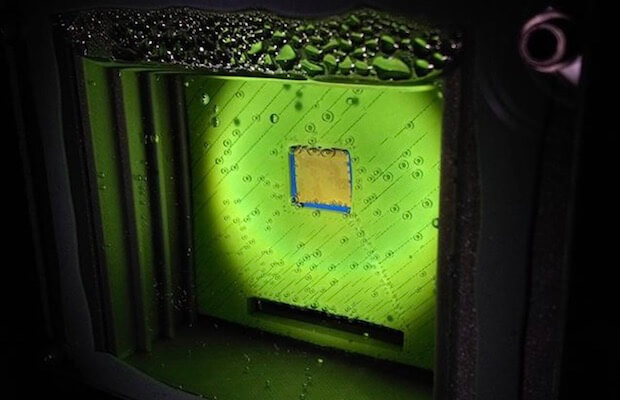Artificial Leaf Device That Converts Sunlight to Clean Gas

Scientists have developed an ‘artificial leaf’ device that uses sunlight to produce a widely-used clean gas currently made from fossil fuels and could be used to create a sustainable liquid fuel alternative to petrol. The carbon-neutral device can directly produce the gas called ‘syngas’, in a sustainable and simple way from carbon dioxide and water, setting a new benchmark in the field of solar fuels.
Rather than running on fossil fuels, the artificial leaf developed by researchers at the University of Cambridge is powered by sunlight, although it still works efficiently on cloudy and overcast days.
Unlike the current industrial processes for producing syngas, the leaf does not release any additional carbon dioxide into the atmosphere, according to the research published in the journal Nature Materials.
Syngas is currently made from a mixture of hydrogen and carbon monoxide and is used to produce a range of commodities, such as fuels, pharmaceuticals, plastics and fertilizers.
“You may not have heard of syngas itself but every day, you consume products that were created using it. Being able to produce it sustainably would be a critical step in closing the global carbon cycle and establishing a sustainable chemical and fuel industry,” said Professor Erwin Reisner from Cambridge.
The device is inspired by photosynthesis — the natural process by which plants use the energy from sunlight to turn carbon dioxide into food.
On the artificial leaf, two light absorbers, similar to the molecules in plants that harvest sunlight, are combined with a catalyst made from the naturally abundant element cobalt. When the device is immersed in water, one light absorber uses the catalyst to produce oxygen. The other carries out the chemical reaction that reduces carbon dioxide and water into carbon monoxide and hydrogen, forming the syngas mixture.
The researchers discovered that their light absorbers work even under the low levels of sunlight on a rainy or overcast day.
“This means you are not limited to using this technology just in warm countries, or only operating the process during the summer months,” said Ph.D. student Virgil Andrei, first author of the research. “You could use it from dawn until dusk, anywhere in the world,” Andrei said.




